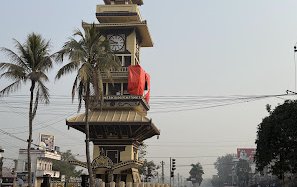It is time to view, for our country is in the doldrums. A lot of work done by our House of Representatives and the various select committees in connection with pending laws are lying in the archives. Because the House adjourned, many of these proposed laws, inclusions or omissions have not been looked at and are dumped as minutes in the archives. These being intellectual products of previous members of the House, and as much time, energy had been spent by both House and Assembly to propose laws for our country. It is therefore suggested that all pending legislations, the result of hours of work should be unearthed and looked at again.
A recent article by a former Law Minister Shri Madan Poudel in a Kathmandu Daily has given suggestions on how to make our parliament more effective. His first essential requirement is to make fixed house calendar which is essential to guard against the whims of the PM or the Party Chiefs of the main political parties of the land. A fixed Calendar with a Winter, Budget and Summer Session will ensure that the sessions of Parliament Houses are not prorogued as per the whims of the PM nor the Party Chief of the party in power.
Presence of the PM and Ministers in the House to answer the queries of the ministers on various happenings in the land, the countermeasures by the government and the result of actions must be available to the elected representative so that they can report the same to the people who elected them. What is taking place? Current thinking is that a lot of the time, effort and zeal of the newly elected members is wasted because of the lackadaisical attitude of the PM and cabinet ministers who do not attend the House regularly or answer the various queries raised within the chamber. It was nice to see on 18th May, the PM answering questions posed by the MPs. His assurance that Lauda & Wide Body kandas, Cantonment Ghotala, Bal Mandir & Lalita Niwas land scams, N Cell matters, plus even Madan/Ashrit & Darbar Hatya will be investigated was heartening to hear. One is not certain as to what extent this assurance will be carried out and whether these misdeeds will ever see the light of day! Sadly one saw an empty on 21st May when points on the Budget were being discussed!
From the time of late King Mahendra, the constitution of Nepal had been following an election pattern that exists at the present time in the United Kingdom. This had enabled the party getting the largest number of seats in the national elections to form the government. As time went on, Nepal developed a number of other constitutions and various voting patterns.
Now is the time to review the current system of governance that we have. It is a mixture of the first past the post (FPTP) and mixed member proportional (MMP) to elect members of the Houses of Representatives (HoR). A similar system is in force for the Pradesh too. The President and Vice-President of the land are then elected by the members of the HoR and the National Assembly (NA).
However the reality is that the current system has failed to give a clear winner in the elections to the HoR leading thereby led to the formation of ‘goodbandis’ and instability. This state of affairs has to be changed if Nepal is to develop as a Nation. What are the options? :
- Change to a system where the number of seats in the HoR will be on gender equity i.e. 50% for males and females. The number of members per district will be mostly two with far flung areas having just one representative. The members so elected will be Members of Parliament (MP), with their activities confined to the HoR and will not be eligible to be ministers.
- The Prime Minister (PM) will be elected by the people from among the different parties contesting the election as is presently done. The PM will select his cabinet from qualified members of the public to a maximum of 15 State and Assistant Ministers. Such ministers will be answerable too, to the sitting members of the HoR and answer questions posed by the MPs on a regular basis.
- The NA or upper house will continue as has been set up but the future composition will all be on gender equity with 50% of each sex.
- The present Pradesh set will be replaced by a much smaller, effective setup of Assembly members and fewer ministerial posts will be more beneficial for peoples’ aspirations and welfare. There will be a Pradesh Chief with four other ministers only to look after agriculture, education, health care and local government which will then be Pradesh Responsibilities. Matters of these four areas will be co-ordinated with the PM or the Deputy PM in the National Government. Co-ordination will be done in the case of hospitals, universities, and museums etc which exist on a national basis. Some may be handed over to Pradesh authorities. The military, police and the civil service will continue to run the various institutions as they are currently doing.
Forgetting for a moment the local enthusiasm to construct view towers willy nilly, local inhabitants in various parts of Nepal must be given funds to construct solid images in certain areas to represent their identities where visitors can take photos as memorabilia e.g. karuwas, adhuwas or tumbas!
- The practice of sending budget rather late and the practice of utilisation in the last quarter of the financial year to buy cars for personnel, machines for hospitals without personnel to use them and building bridges and roads that cannot be used because of not being completed, have all to stop.
- The President and Vice-President will continue to be elected as per the rules and norms existing now.
Looking over the state of the country it looks like that nepotism and corruption have become endemic. Can our new crop of leaders tackle and rid us of these two grave bazrapaths on our heads?
The author is a retired medical doctor and writes fiction under the pen name of Mani Dixit also. Website: www.hdixit.org.np. Twitter: @manidixithd

Hemang Dixit
The author writes fiction under the name of Mani Dixit. Website: www.hdixit.org.np. Twitter: @manidixithd
- Top Heavy
- Sep 20, 2023
- Most Able?
- Sep 04, 2023
- Changing Times
- Aug 21, 2023
- Nepali Shenanigans
- Aug 03, 2023
- Budget Naataks
- Jun 29, 2023















